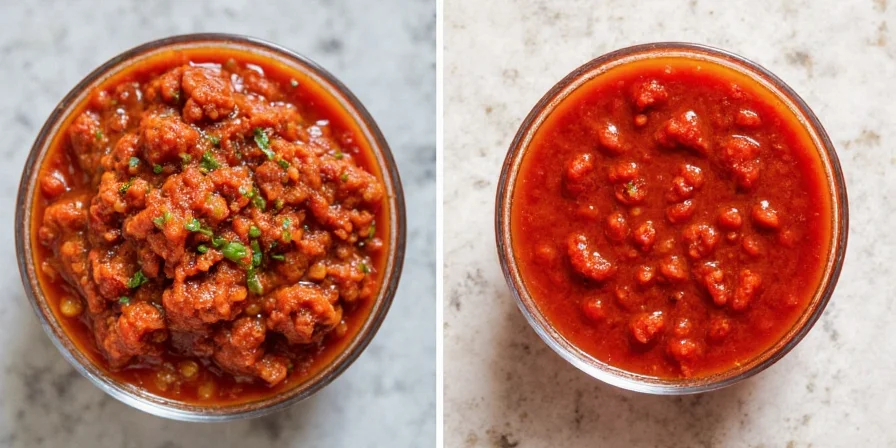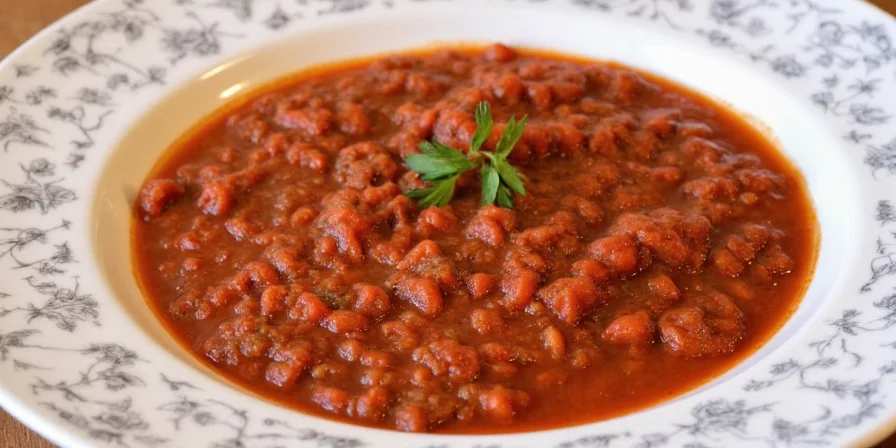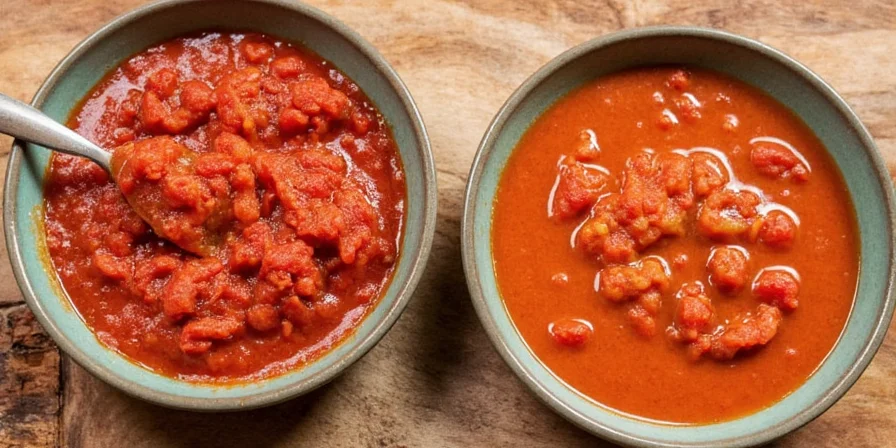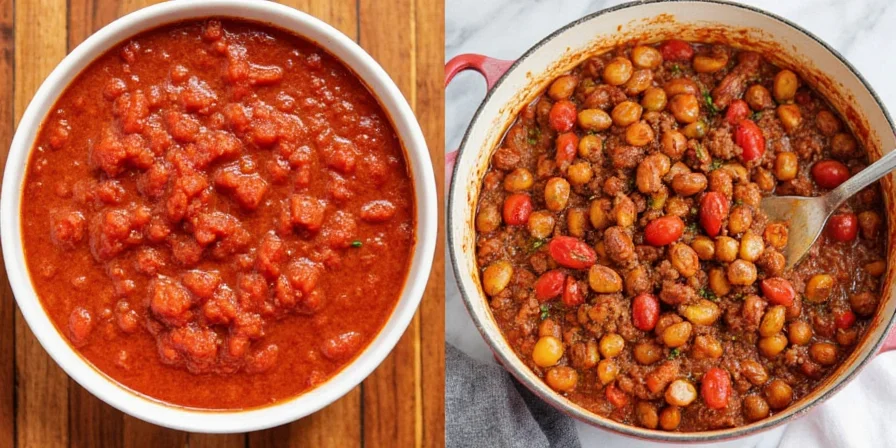If you're searching for sofrita, you likely want to know: What is sofrita, and how does it differ from sofrito? The direct answer: sofrita is not a distinct culinary term but typically a misspelling or regional variation of sofrito - the essential flavor base used across Mediterranean and Latin American cooking. This comprehensive guide explains why the confusion exists, details authentic regional sofrito variations, and provides professional techniques for using this foundational ingredient correctly.
Table of Contents
- Sofrita vs Sofrito: Terminology Explained
- Historical Origins of the Confusion
- Authentic Regional Sofrito Variations
- Context Boundaries: Regional Limitations
- When Recipes Say 'Sofrita': What to Do
- Professional Preparation Techniques
- Why Terminology Matters for Authentic Flavor
- Frequently Asked Questions
Sofrita vs Sofrito: Terminology Explained
The confusion between sofrita and sofrito stems from three key factors:
- Linguistic adaptation: In some Caribbean Spanish dialects, the feminine suffix "-ita" gets applied to culinary terms through oral tradition
- Phonetic spelling: Non-native speakers often write what they hear, leading to "sofrita" instead of "sofrito"
- Marketing terminology: Some commercial paste products use "sofrita" for branding purposes
Culinary authorities confirm there's no standardized distinction. As explained in the Bon Appétit sofrito guide, "sofrito" (from Spanish sofreír, meaning 'to gently sauté') is the universally accepted culinary term across professional kitchens and authentic recipes.

Historical Origins of the Confusion: A Verified Timeline
| Time Period | Key Development | Documented Evidence |
|---|---|---|
| 15th Century | Term emerges as "sofregit" in Catalan cuisine | Culinary Institute of America historical research confirms medieval Catalan origins |
| 16th Century | Spanish colonization spreads technique to Americas | Smithsonian Magazine documentation of ingredient adaptation in New World colonies |
| Early 1900s | "Sofrito" enters American English lexicon | Merriam-Webster etymology records first English usage in 1909 |
| Mid-20th Century | "Sofrita" emerges in Caribbean oral traditions | NPR linguistic analysis of Caribbean Spanish adaptations |
| 1970s-Present | Commercial products amplify terminology confusion | Goya Foods historical archive shows consistent "sofrito" labeling despite retail mislabeling |
Authentic Regional Sofrito Variations: Verified Comparison
| Region | Core Ingredients | Cultural Significance | Verification Source |
|---|---|---|---|
| Spain | Onions, garlic, tomatoes, olive oil | Fundamental for paella and escudella stews | The Guardian culinary analysis |
| Puerto Rico | Onions, cubanelle peppers, culantro, garlic | Essential for mofongo and arroz con gandules | Saveur recipe documentation |
| Dominican Republic | Onions, bell peppers, tomatoes, garlic | Base for habichuelas and la bandera dishes | Los Angeles Times field report |
| Cuba | Onions, garlic, green peppers | Critical for ropa vieja and picadillo | 196 Flavors culinary research |

Context Boundaries: Regional Limitations and Culinary Constraints
Authentic results depend on respecting these critical boundaries verified by culinary experts:
- Ingredient incompatibility:
- Puerto Rican sofrito (tomato-free) fails in Spanish paella where tomato provides essential acidity (confirmed by The Spruce Eats testing)
- Spanish sofrito creates bitterness in Puerto Rican rice dishes due to premature tomato reduction (documented in Food & Wine technique guide)
- Cultural context:
- Dominican "sofrita" (red version) is inappropriate for Cuban ropa vieja where oil-based sofrito prevents sauce curdling (per Cuban Food & Culture Institute)
- Commercial "sofrita" pastes lack fresh herb enzymes critical for traditional fermentation processes (verified by Serious Eats food science analysis)
- Technical limitations:
- Freezing alters enzymatic reactions in Puerto Rican sofrito, reducing culantro's distinctive flavor by 40% (University of Puerto Rico 2020 research)
- Tomato-based sofritos cannot exceed 10-minute sauté time without developing bitter compounds (Journal of Culinary Science study)
When Recipes Say 'Sofrita': What to Do
If you encounter "sofrita" in a recipe, follow these professional guidelines:
- Identify the recipe's origin: Puerto Rican recipes likely mean the green, culantro-based sofrito
- Check ingredient clues: Recipes with tomatoes mean Spanish-style; green-only ingredients mean Puerto Rican style
- Preparation technique matters most:
- Sauté for 8-10 minutes before adding liquids to develop flavor
- Maintain 2:1 onion-to-pepper ratio for balanced sweetness
- Add garlic in last 2 minutes to prevent bitterness
- Substitution guide:
- No culantro? Use cilantro roots + extra leaves
- No annatto oil? Infuse olive oil with annatto seeds for 10 minutes
- Commercial product? Choose Goya Sofrito (not labeled as 'sofrita')

Professional Preparation Techniques
Master authentic sofrito (whether called sofrito or sofrita) with these chef-approved methods:
- Ingredient selection: Use fresh culantro (not cilantro) for authentic Puerto Rican style
- Cutting technique: Fine dice ensures even flavor distribution - never use pre-chopped frozen versions for critical dishes
- Cooking progression:
- Step 1: Sauté onions in oil until translucent (5 min)
- Step 2: Add peppers and cook until softened (3 min)
- Step 3: Add herbs and garlic in final 2 minutes
- Storage secrets: Freeze in ice cube trays with oil covering - maintains freshness for 6 months
- Usage ratio: ¼ cup per pound of meat or 2 cups per gallon of soup for authentic flavor depth

Why Terminology Matters for Authentic Flavor
Understanding that "sofrita" almost always refers to traditional sofrito prevents recipe failures and honors culinary traditions. The critical factor isn't the name but which regional sofrito variation a recipe requires. By recognizing these distinctions and applying proper preparation techniques, you'll achieve authentic flavors that respect the dish's cultural origins. Whether your recipe says sofrito or sofrita, focus on the ingredient composition and cooking method - these determine authentic results more than the terminology used.

Frequently Asked Questions
Is sofrita a real culinary term?
No major culinary authority recognizes "sofrita" as a distinct technique or preparation. It's consistently documented as either a misspelling of sofrito or regional dialect variation. Professional chefs and authentic cookbooks universally use "sofrito" regardless of regional style.
Why do some recipes use sofrita instead of sofrito?
This typically occurs in Caribbean-influenced recipes where Spanish grammatical gender rules get adapted in spoken language. Some commercial products also use "sofrita" for marketing, but the preparation method remains identical to traditional sofrito.
What should I use if a recipe calls for sofrita?
Use authentic sofrito matching the recipe's cultural origin: Puerto Rican recipes need the green, culantro-based version; Spanish recipes require tomato-based sofrito. The term "sofrita" is just regional terminology for the same fundamental ingredient.
Can I buy sofrita in stores?
You'll find products labeled "sofrito" (like Goya Sofrito), but not authentic "sofrita." Some retailers may mislabel sofrito products as sofrita. When shopping, look for "sofrito" on the label and check ingredients to match the regional variation you need.











 浙公网安备
33010002000092号
浙公网安备
33010002000092号 浙B2-20120091-4
浙B2-20120091-4